Types of Braces Woodland Hills, CA
A journey to achieve a confident smile often involves the assistance of orthodontic treatment. In Woodland Hills, CA, Orthodontics in Woodland Hills is at the forefront of transforming smiles through a range of orthodontic solutions. Understanding the various types of braces is crucial in making an informed decision about which option aligns with your lifestyle and dental needs.
How Braces Work
Before discussing the specific types of braces offered by Orthodontics in Woodland Hills, it’s essential to grasp the fundamental principles behind how braces work. Braces, in their various forms, operate on the basic premise of applying consistent pressure to the teeth over time. This pressure produces controlled movement, allowing the teeth to shift into their correct positions.
Orthodontic braces consist of brackets, wires, and bands. The brackets are attached to the teeth, and the wires pass through them, exerting gentle force. Over time, adjustments are made to ensure a gradual and comfortable shifting of the teeth. This process not only enhances the aesthetic appeal of your smile but also corrects functional issues such as misalignment and bite irregularities.
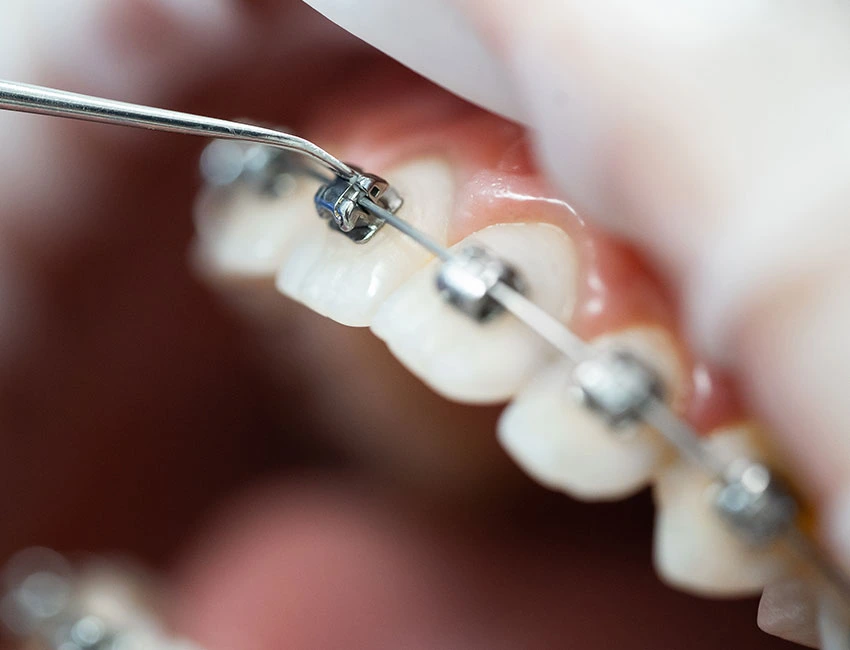
Metal Braces
Metal braces have been a traditional yet highly effective choice for orthodontic treatment. Comprised of stainless steel brackets and wires, metal braces are known for their durability and affordability. The brackets are attached to the front of the teeth and connected by wires, which the orthodontist periodically tightens.
One of the significant advantages of metal braces is their versatility in treating various dental issues, from simple misalignment to more complex cases. With advancements in design, modern metal braces are more comfortable and less conspicuous than their predecessors. For those who appreciate reliability and a robust solution, metal braces offered by Orthodontics in Woodland Hills are an excellent choice.
Clear Ceramic Braces
Ceramic braces provide a compelling alternative for individuals seeking a more discreet option. These braces share the same fundamental design as metal braces but feature clear or tooth-colored brackets. This subtle appearance makes them less noticeable, addressing the aesthetic concerns often associated with traditional metal braces.
Ceramic braces offer the same level of effectiveness as metal braces, making them suitable for a wide range of orthodontic corrections. At Orthodontics in Woodland Hills, we understand the importance of a treatment option that delivers results and aligns with your desire for a less conspicuous look.
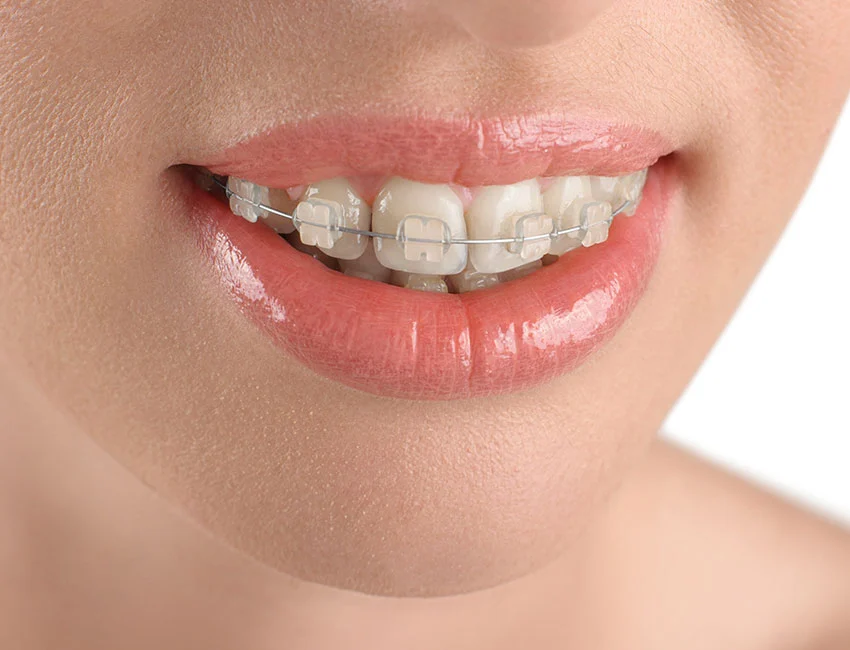
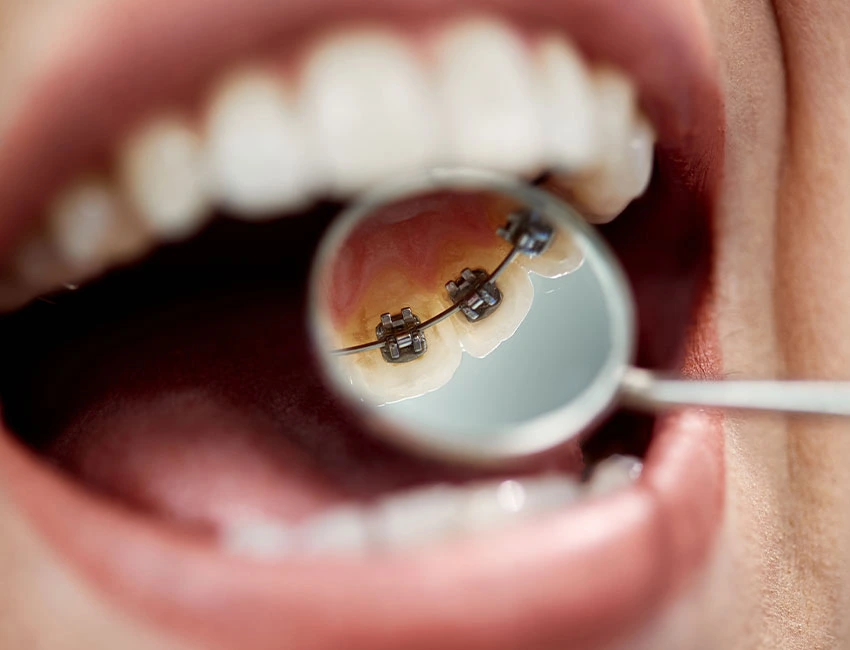
Lingual Braces
Lingual braces are a type of orthodontic treatment where braces are attached to the back side of the teeth, making them invisible when you smile or talk. They work in a similar way as traditional braces, using brackets and wires to gradually move teeth into their correct positions. Lingual braces are custom-made for each patient, ensuring a comfortable fit and effective treatment.
Lingual braces are ideal for adults and teens who are self-conscious about wearing braces, they offer an aesthetic solution for correcting misaligned teeth without affecting the appearance. The treatment duration and effectiveness are comparable to that of traditional braces, but lingual braces may require more adjustments and can be more challenging to clean due to their placement.
Clear Aligners
In recent years, clear aligners have gained popularity as a comfortable and nearly invisible orthodontic solution. Orthodontics in Woodland Hills offers state-of-the-art clear aligner treatments designed to shift your teeth into alignment gradually. Clear aligners consist of a series of custom-made, removable trays that you wear over your teeth.
The key advantage of clear aligners is their discreet appearance and the flexibility they provide. Unlike traditional braces, clear aligners can be removed for eating, brushing, and special occasions. This makes them a popular choice for individuals with active lifestyles who require a less restrictive orthodontic option.
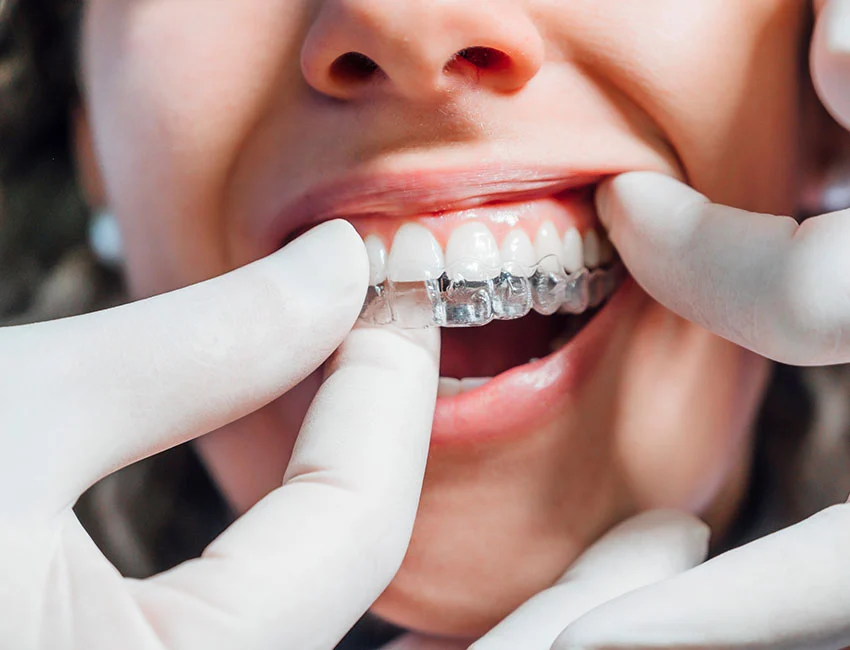
Getting Braces in Woodland Hills, CA
Choosing the right type of braces is a significant decision, and at Orthodontics in Woodland Hills, we prioritize providing personalized care tailored to your specific needs. The journey begins with a comprehensive consultation, where our experienced orthodontists assess your dental condition and discuss your treatment goals.
During the consultation, you’ll have the opportunity to explore the different types of braces available and receive expert advice on which option is best suited for your case. Our team at Orthodontics in Woodland Hills takes pride in fostering a supportive environment, and we can help you make decisions that align with your preferences and lifestyle.
How Long is Braces Treatment?
The duration of orthodontic treatment varies depending on the complexity of the case and the type of braces chosen. Metal braces and ceramic braces typically require an average treatment time of 18 to 24 months. On the other hand, clear aligners may have a slightly shorter treatment time in some cases, ranging from 12 to 18 months.
It’s important to note that these are general estimates, and your orthodontist at Orthodontics in Woodland Hills will provide a more accurate timeline during your initial consultation. Factors such as the severity of misalignment, compliance with treatment guidelines, and individual response to orthodontic forces all play a role in determining the duration of your braces treatment.
Reserve Your Consultation
A straighter, healthier smile starts with a consultation at Orthodontics in Woodland Hills. Our team is committed to providing personalized and effective orthodontic solutions in Woodland Hills, CA. Contact us today!
Questions Answered on This Page
- How Braces Work
- Metal Braces
- Ceramic Braces
- Lingual Braces
- Clear Aligners
- Getting Braces in Woodland Hills, CA
- How Long is Braces Treatment?
Related Topics
Frequently Asked Questions
Most orthodontic treatments take 12-18 months to complete on average. However, some cases are simple enough to complete in 4-6 months, while others require up to 24 months from start to finish. Orthodontics in Woodland Hills will provide you with an estimated timeframe during your initial consultation.
The American Association of Orthodontists recommends that all children receive an orthodontic evaluation by age 7, when there’s a combination of both primary (baby) and permanent (adult) teeth. These early evaluations allow specialists and dentists to intercept potentially major tooth and jaw misalignment, reducing the need for surgical correction in the future.
Plan to brush your teeth twice a day and floss daily. Be sure to brush above and below your brackets, paying close attention to the gumlines. Then clean between your brackets with a proxy brush or interdental brush. Use a floss threader or water flosser to clean between teeth daily, where brushing doesn’t reach.
Yes. Regular dental exams and cleanings are essential during orthodontic treatment, as it may be difficult to reach some areas throughout your mouth. Some braces patients benefit from cleanings every 3-4 months instead of every six.
Yes. If you’re involved in sports, we recommend wearing an over-the-counter athletic mouthguard to safeguard your lips, cheeks, and teeth. This will also reduce any risk of soft tissue trauma during athletic injuries. For musicians, we recommend planning your orthodontic visits around important ensembles, try-outs, concerns, and contests, as adjustments may affect your embeshire.
Most orthodontic patients will need a check-in visit for an adjustment every six weeks or so. These visits are essential to keeping your tooth alignment on track, so always plan to keep your appointments to avoid treatment delays.
Definition of common braces terminology
Braces: Fixed orthodontic appliances, usually made of ceramic or metal, and consisting of brackets and wire designed to align teeth.
Brackets: The tiny metal, ceramic or clear plastic supports that are affixed to each individual tooth on the arch.
TMJ: Temporomandibular Joint (TMJ) disorders are conditions affecting the jaw joints and surrounding muscles and ligaments.
Expander: An orthodontic appliance that can widen the jaws.
Open Bite: A condition in which the upper and lower teeth fail to come together. This type of malocclusion is generally classified as anterior or posterior.
Crowding: Crowding is the lack of space for all the teeth to fit normally within the jaws.
Crossbite: A malocclusion in which the upper back teeth bite inside or outside the lower back teeth, or the lower front teeth bite in front of the upper front teeth.
Orthodontist: A dentist who has been specially trained to do orthodontics.
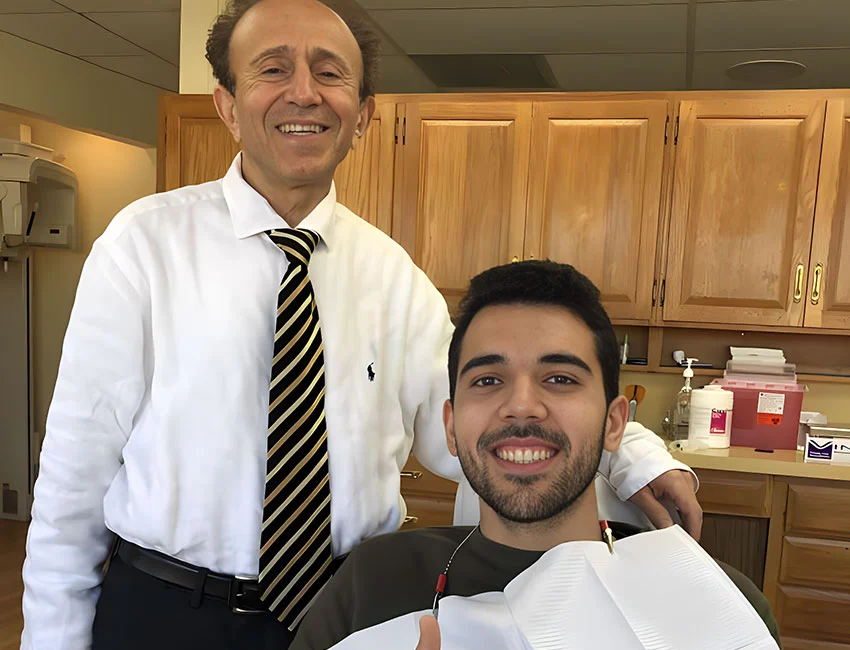
The Orthodontics in Woodland Hills Experience
- Highest Level of Dental Care
- Friendly and Caring Staff
- Affordable Financing Options
- Personalized Dental Services
Hear From Our Patients

I went to Dr.Zarinnia and his team when I was a teenager for braces. My case was bad and almost needed major surgery. Luckily Dr.Z and his team are experts. The process took a few years for my case and the outcome was excellent. The process was smooth. They always took care of me and continue to years later. I would definitely recommend to my family and close friends.

Both my son and I have been getting braces treatment from Dr. Zarrinnia for the past 2 years. I recently just finished my treatment and have been very satisfied with the results. My son has another couple months to go but his teeth have come a long way as well and are looking good. I’m a busy guy so appreciate that when I have an appointment for an adjustment that I rarely have to wait more than 5 minutes. Dr. Z and all the technicians are super nice and adjustments are a breeze. I went with the clear ceramic braces. Most people were unaware I even had braces. Check out Dr. Zarrinnia and his team if you want to improve your smile!

We had a wonderful experience with Dr. Zarrinnia and everyone in his office. We had to alter our original plans because we are moving out of state. The braces came off early but you can’t tell. Dr. Zarrinnia made huge improvements in a short amount of time. My son had a significant overbite but you woulD never know if by looking into at his beautiful smile now!
Book Your Free Consultation Today
The first step to the smile of your dreams
About our Orthodonticsry
- CA (License #
51188). View License Information - Insurance: We work with most insurance providers.
- Financing Options: We offer easy orthodontic financing options.
- We serve patients from the following counties: Los Angeles
- We serve patients from the following cities: Woodland Hills and its nearby cities, including Agoura Hills, Calabasas, Canoga Park, Chatsworth, Encino, Hidden Hills, Reseda, Tarzana, Topanga, West Hills, and Winnetka.
- Have Questions? Please feel free to contact us at 818-225-0530
Helpful links: WebMD (Braces) | Glossary of Dental Terms. (ADA)

